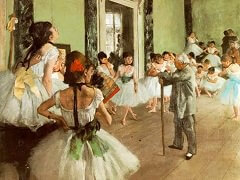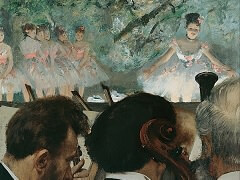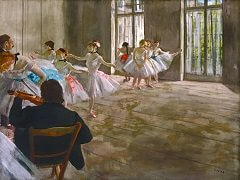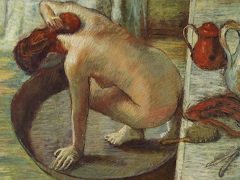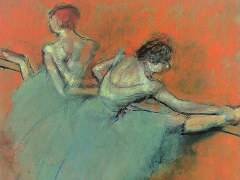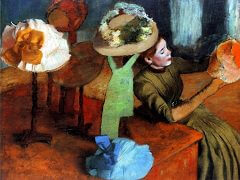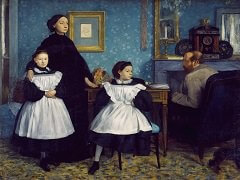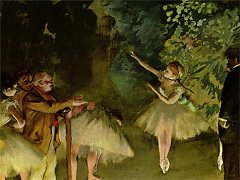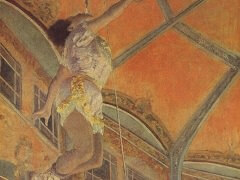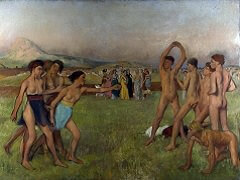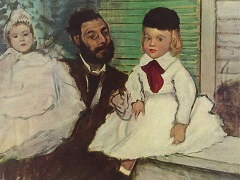Ballet Rehearsal on Stage, 1874 by Edgar Degas
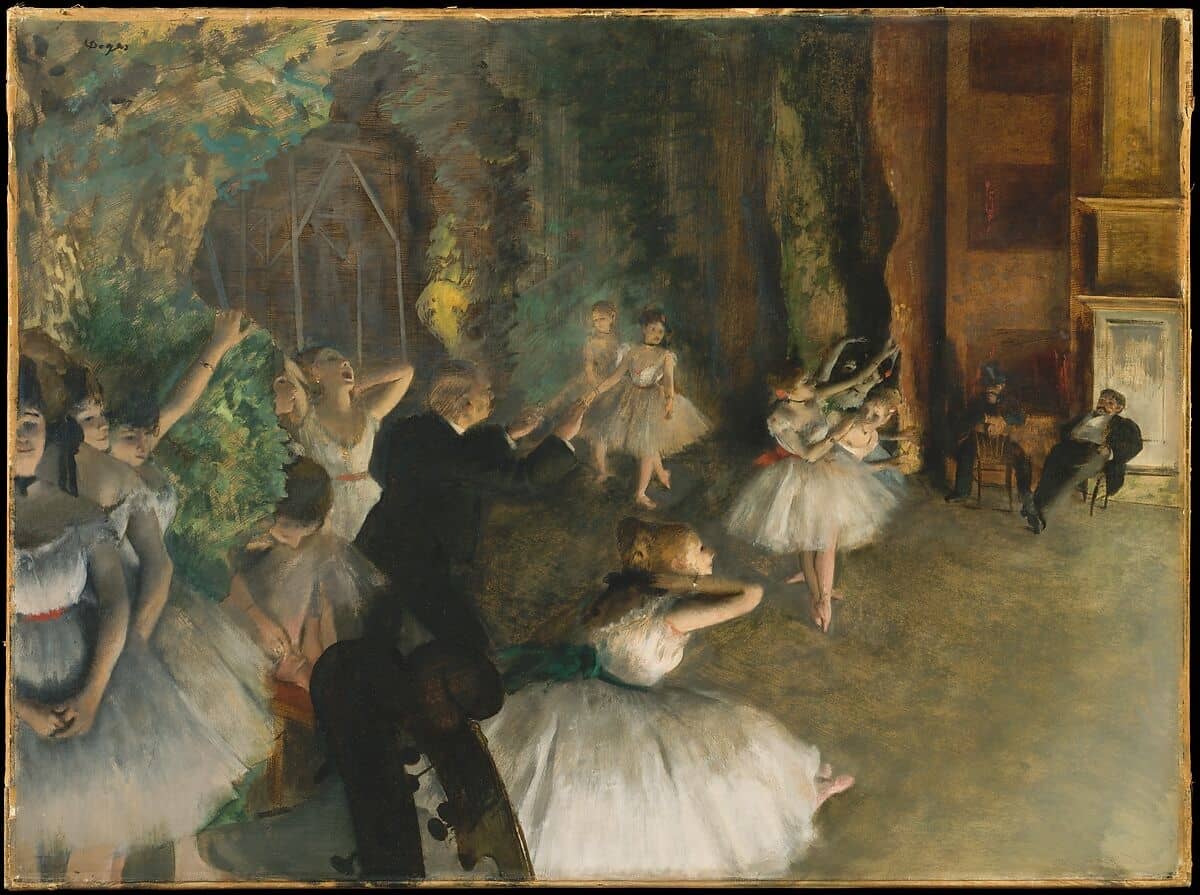
Ballet Rehearsal on Stage, painted in 1874, was not a typical impressionist painting. The painting is an oil on canvas. The lack of color is evidence of the painting's anit-impressionism. The most obvious difference between this painting of ballet and another impressionist's ballet scene is that the dancers are rehearsing. Keith Roberts said, "It retains little quiet charm, like most ballet scenes did".
Most ballet scenes show dancers performing for an audience, but Degas shows the dancers in a different way. The dancers are not only dancing but they are stretching and yawning. Though all of the dancers shown are dressed uniformly, their faces are not uniform. Every dancer has a different facial expression, but all of the expressions read as one mood: fatigue. One dancer obviously yawning, with both hands stretched back behind head, head raised, and mouth wide open. The dancers do not show the beauty seen on the stage. Author, Francesco Salvi, has his own view of Degas' depiction: "In The Rehearsal on Stage he captures the repetitious nature of a job like any other: the ballerinas' movements, rehearsed and re-rehearsed, an old teacher, two bored onlookers".
In the bottom right corner of the painting, the first empty row of the theater is shown, once again reiterating that it is a rehearsal shown. The colors are dull, reinforcing the mood. Ballet Rehearsal on Stage is a prime example of Degas' work. This painting clearly shows the Parisian culture because ballet was a major aspect at that time.



